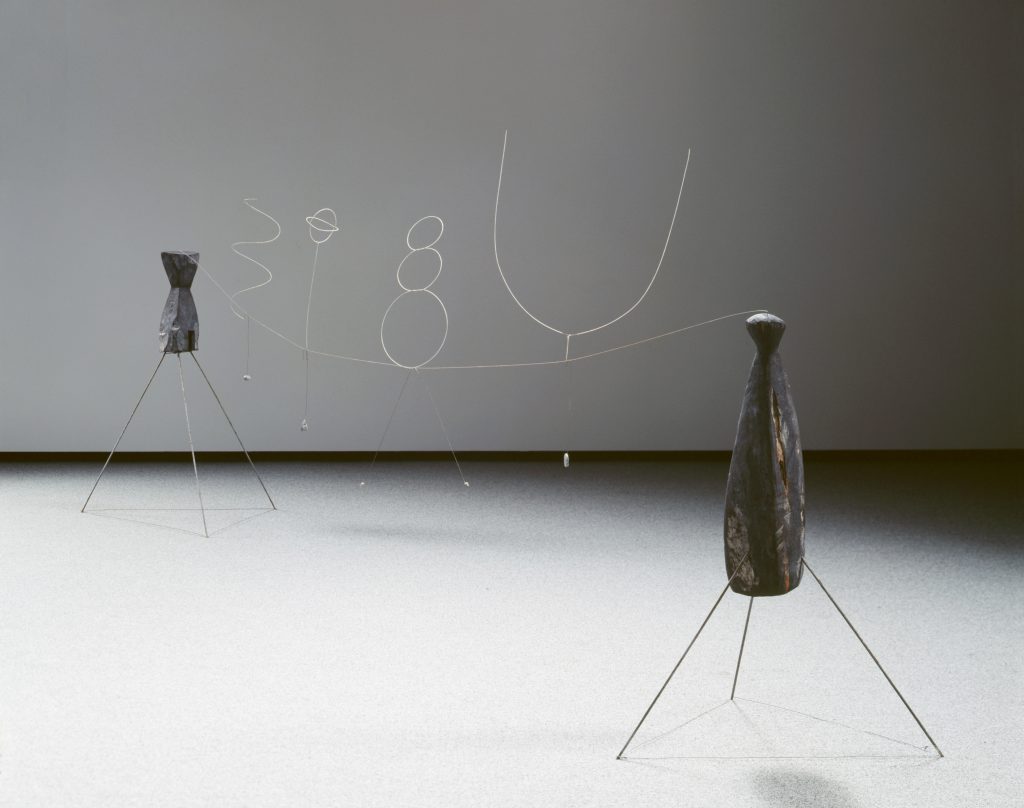

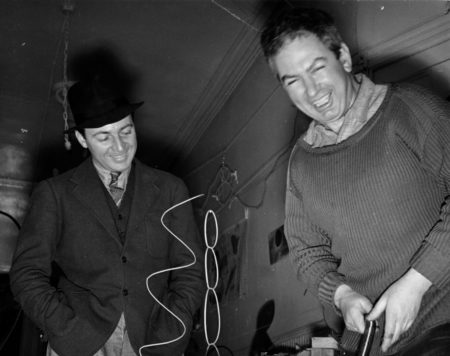
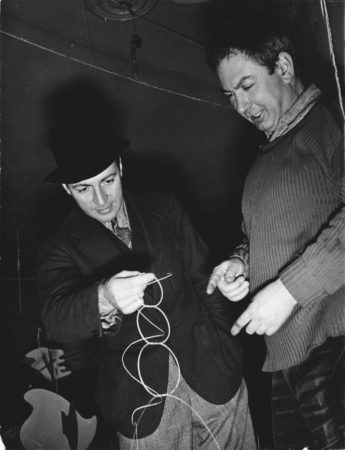
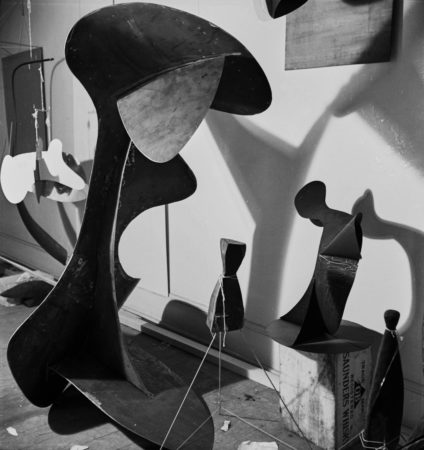
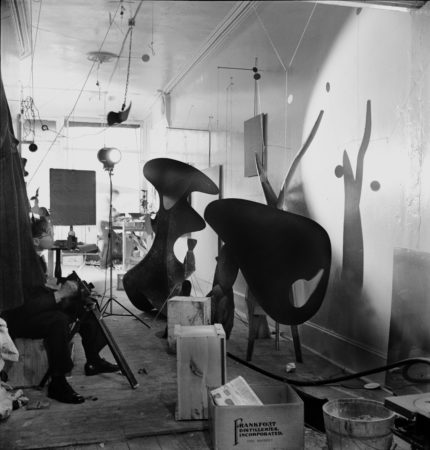
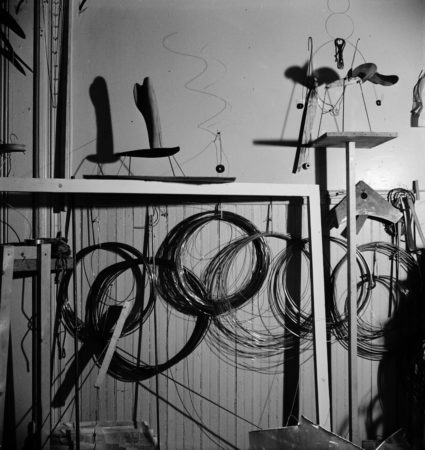
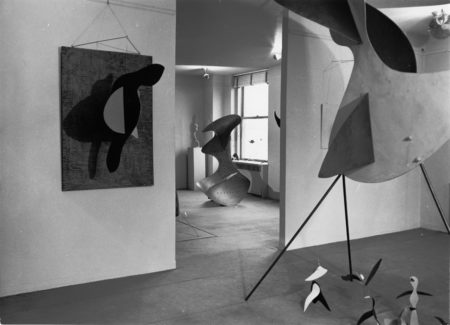
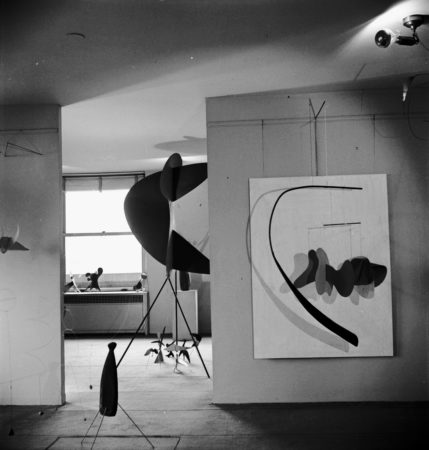
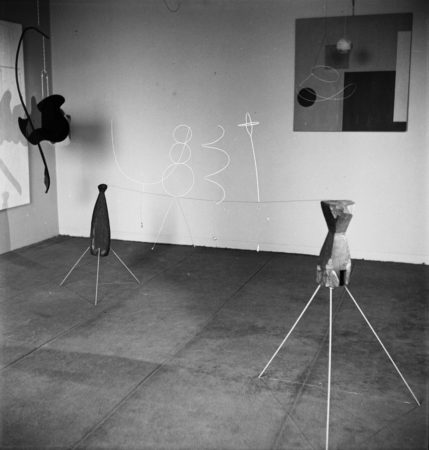
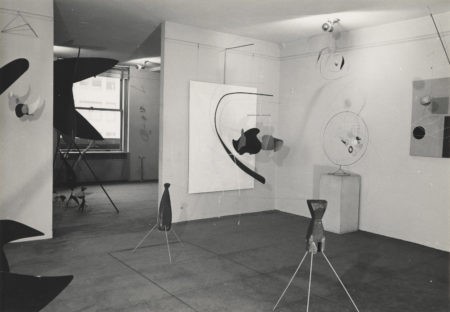
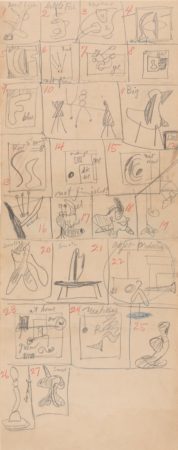
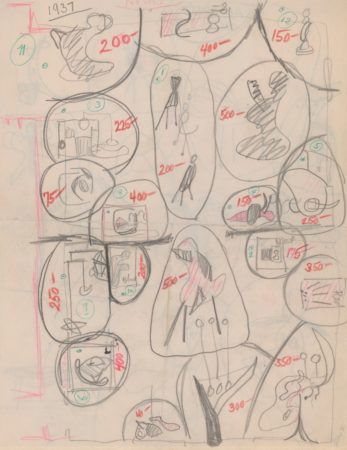
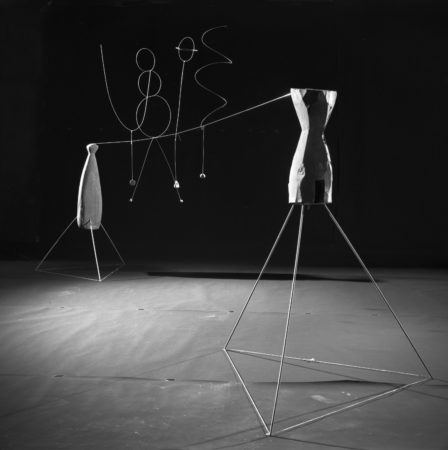
Pierre Matisse Gallery, New York. Calder: Stabiles & Mobiles. 23 February–13 March 1937.
Solo ExhibitionThe Museum of Modern Art, New York. Alexander Calder: Sculptures and Constructions. 29 September 1943–16 January 1944.
Solo ExhibitionNew Gallery, Charles Hayden Memorial Library, Massachusetts Institute of Technology, Cambridge. Calder. 5 December 1950–14 January 1951.
Solo ExhibitionMuseu de Arte Moderna, São Paulo, Brazil. II Bienal do Museu de Arte Moderna de São Paulo. 15 December 1953–28 February 1954.
Group ExhibitionArts Council of Great Britain, Tate Gallery, London. Alexander Calder: Sculpture–Mobiles. 4 July–12 August 1962.
Solo ExhibitionWhitney Museum of American Art, New York. Calder’s Universe. 14 October 1976–6 February 1977.
Solo ExhibitionNational Gallery of Art, Washington, D.C. Alexander Calder: 1898–1976. 29 March–12 July 1998.
Solo ExhibitionFundación del Museo Guggenheim Bilbao. Calder: Gravedad y la Gracia. 18 March–12 October 2003.
Solo ExhibitionPalazzo delle Esposizioni, Rome. Calder: Sculptor of Air. 23 October 2009–14 February 2010.
Solo ExhibitionLeeum, Samsung Museum of Art, Seoul. Calder. 18 July–20 October 2013.
Solo ExhibitionTate Modern, London. Alexander Calder: Performing Sculpture. 11 November 2015–3 April 2016.
Solo ExhibitionFondation Beyeler, Riehen/Basel. Alexander Calder & Fischli/Weiss. 29 May–4 September 2016.
Group ExhibitionWhitney Museum of American Art, New York. Calder: Hypermobility. 9 June–23 October 2017.
Solo ExhibitionNational Gallery of Victoria, Melbourne. Alexander Calder: Radical Inventor. 5 April–4 August 2019. Originated from Montreal Museum of Fine Arts.
Solo ExhibitionFollowing a visit in October of 1930 to Piet Mondrian’s studio, where he was impressed by the environmental installation, Calder made his first wholly abstract compositions and invented the kinetic sculpture now known as the mobile. Coined for these works by Marcel Duchamp in 1931, the word “mobile” refers to both “motion” and “motive” in French. He also created stationary abstract works that Jean Arp dubbed “stabiles.”